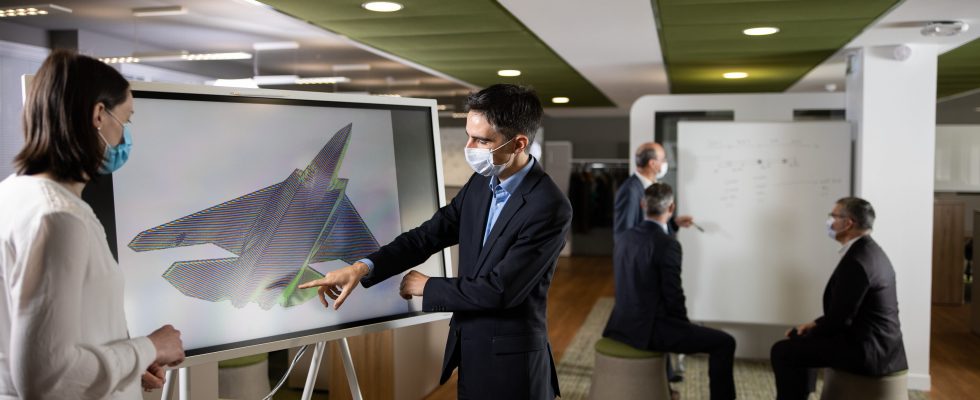Above the Gulf of Cadiz, in Spain, on March 21, Airbus is orchestrating a strange aerial ballet. Drones catapulted from the shore, piloted by ground operators, meet an A310 MRTT. On board this refueling aircraft, an artificial intelligence (AI) program takes control of the aircraft, guiding them to a predefined position. In the offices of the manufacturer, we are jubilant: the test takes place as expected. An important milestone in the Future Air Combat System (SCAF) program has been achieved.
Towards a combat cloud
The SCAF, called to succeed the Rafale and the Eurofighter in 2040, will not be reduced to a simple combat aircraft. Thanks to a “combat cloud”, it will be connected to companion drones, some of which will have to refuel autonomously. This project launched in 2017, valued at 100 billion euros, and carried by Paris, Berlin and Madrid, is entering a more active phase. After more than a year of blocking, the French Dassault Aviation, prime contractor for the manned aircraft, and the German Airbus Defense and Space finally agreed, in December, on the distribution of certain tasks.
Hence the beginning of major maneuvers which sees the engineers of the 14 manufacturers involved in the project (including also Indra, Thales, MBDA, Safran, MTU) get to work together. “We now have personnel deployed on the Dassault site in Paris, where some have moved with their families, while others commute from Munich on weekdays, explains Bruno Fichefeux, SCAF program manager at Airbus. also set up a secure digital collaboration space to connect the various design offices.”
They have a lot to do. Starting with determining, by the end of 2025, the best architecture among “the combinations of different types of new generation fighters and drones”, recently recalled General Jean-Luc Moritz, head of the SCAF operational project for the army. air and space. In a Franco-German standoff, far from having found its epilogue, compromises had to be found, in particular on the manned aircraft: France pleaded in favor of a hunter of reasonable size to land on an aircraft carrier when Germany makes air defense its priority. The next phase should lead to the first flights of a demonstrator in 2028-2029.
Don’t be left behind by the United States
There is an urgent need to agree: the United States are ahead with their NGAD (Next Generation Air Dominance), a prototype of which could take off as early as 2025. Unless Europe once again shoots itself in the the foot since the GCAP program (Global Combat Air Program), competitor of the SCAF, is slowly emerging between the United Kingdom, Italy and… Japan. This excitement can also be explained because the major technological challenge, the collaborative combat “cloud”, based on the storage and distribution of secure data between unmanned vehicles and aircraft, remains to be invented.
Because these “sixth generation” combat aircraft will be led as much by artificial intelligence as by the pilot. “She will work with all the data to support him in his decisions, details Bruno Fichefeux. In particular in the deployment of drones to attack certain targets and decoy others. Only one person will be needed in the cockpit.” Tomorrow, Maverick (the hero of the film Top Gun) will be assisted by an AI that will look more like R2-D2 (the robot of Star Wars) than to a human. Goose, the wingman of Tom Cruise, has cause for concern.
